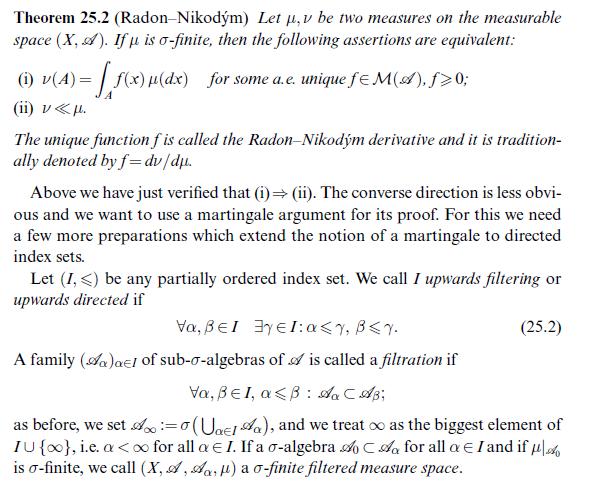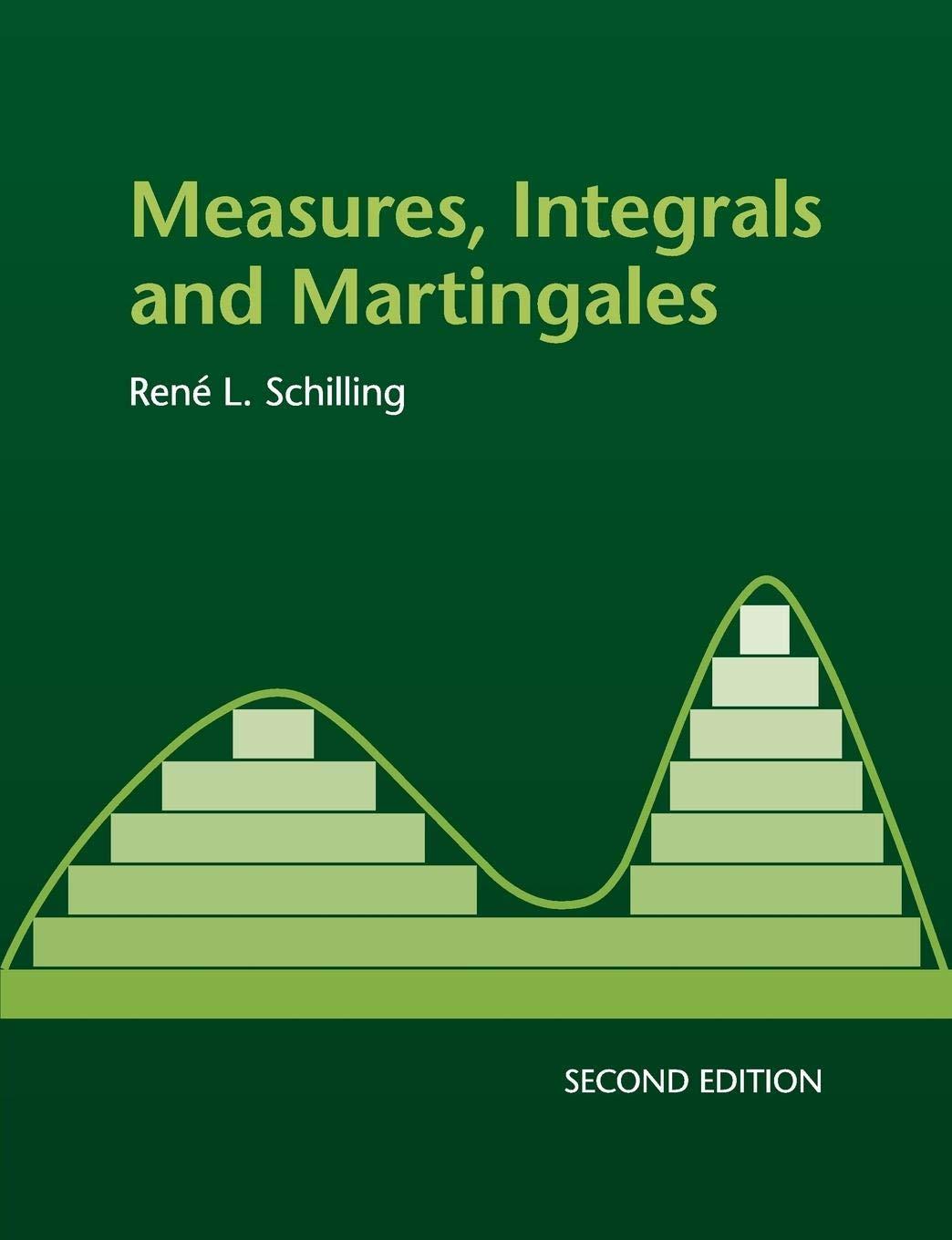A theorem of Doob. Let (left(mu_{t}ight)_{t geqslant 0}) and (left(u_{t}ight)_{t geqslant 0}) be two families of measures
Question:
A theorem of Doob. Let \(\left(\mu_{t}ight)_{t \geqslant 0}\) and \(\left(u_{t}ight)_{t \geqslant 0}\) be two families of measures on the \(\sigma\)-finite measure space \((X, \mathscr{A})\) such that \(u_{t} \ll \mu_{t}\) for all \(t \geqslant 0\) and \(t \mapsto \mu_{t}(A), u_{t}(A)\) are measurable for all \(A \in \mathscr{A}\). Then there exists a measurable function \((t, x) \mapsto p(t, x),(t, x) \in[0, \infty) \times X\), such that \(u_{t}=p(t, \cdot) \mu_{t}\) for all \(t \geqslant 0\).
[ argue as in the proof of Theorem 25.2 :
\[p_{\alpha}(t, x):=\sum_{A \in \alpha} \frac{u_{t}(A)}{\mu_{t}(A)} \mathbb{1}_{A}(x)\]
and check that this function is jointly measurable in \(t\) and \(x\).]
Data from theorem 25.2

Fantastic news! We've Found the answer you've been seeking!
Step by Step Answer:
Related Book For 

Question Posted:





